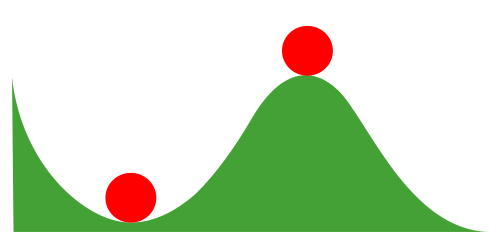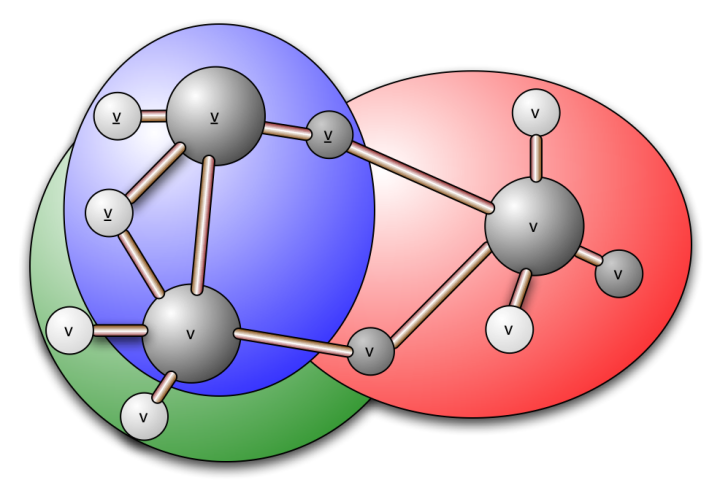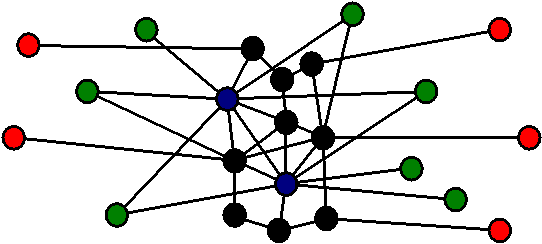The inevitable instability of systems
Sometimes we tend to believe in the stability of systems. Systems are sometimes designed, think about road- or rail systems, or sometimes they are discovered, like stellar systems or the behavior of ant colonies. We design for the best, making it as robust as possible. Or when we discover them, we are amazed about the complexity of it. In most cases, we just don’t understand them with the universe as we know it as the best example.
Why is it that we tend to think that systems need to be stable? Cant’t we just accept that everything where energy (or another flow) is involved is by definition unstable? Sometimes a system appears to be stable, but in time it will become unstable and ultimately it will collapse. Road systems will collapse because too many cars drive on them, because there is not enough construction, or because they become superfluous. Stellar systems are unstable because they will collapse with others or they faint away (no more energy), and ant colonies will disappear.
My understanding is that every system that is created at some point will disappear at another point, and that energy is the fuel that is needed to create and maintain it, but that energy will also destroy it. Without energy a system is dead (maybe stable?), therefore it is inevitable that a system is unstable by definition. So the only stable system might be a dead system. Characteristics of a system are structure, behavior and interconnectivity, all three influence each other resulting in change in those characteristics. While a system exists, those three characteristics influence and change each other. At one point a minor change can start the disruption of the system.
By accepting that systems are per definition unstable, can we design better systems? Let go of control, and accept that the end of one system can mean the beginning of another. Or by letting two systems collapse in a controlled manner, this can mean the start of a new (and perhaps better) one. If we bring this philosophy into organizations (or economies), what can we learn from this? Can we develop new design principles that respect the temporal nature of systems? What is we always include a scenario of the end of the system while we design it? I think this would be a lot better. Think about the current banking issues. Banks collapse, and we try to ‘save’ them. It is basically a quick fix without thinking things through. We think this system is needed, but we haven’t thought through alternatives, and certainly did not think about what to do when this system might fail at some point, certainly not when this system was introduced.
The banking system is not needed for humanity. At some point it seemed a good system for us, and it still might be for some time despite the huge financial injections. But this system is not there forever, and we have seen it’s weaknesses. One of the best example of a temporary system is the democratic system. By definition we accept that they are unstable, and we’ve built in rules to make sure it will collapse quickly. It is not the most efficient system, but it is a system that renews itself on a regular basis. While the democratic system itself can collapse as well, we do not try to make it efficient and stable. That would bring us to dictatorship, which is efficient but has it’s disadvantages.
So, maybe more questions than answers or solutions, and maybe questions that were asked many times before, but some questions need to be asked again and again. Last but not least: systems are interconnected not only with itself, but also with other systems. Let’s not forget that one while designing systems. Instability of one system might be needed (or even crucial, think about day and night, rain and drought) for the stability of another.
The importance of philosophy
Inspiration to write about something can sometimes be hard to find. That’s what’s happened to me this year. For whatever reason, writing on this blog didn’t happen at all. Fortunately inspiration is best found when you’re not looking for it, thanks to Chris Jones while mentioning his latest blogpost. Chris wrote about science and philosophy. He argues for a common ground called complexity. Interesting post, I would recommend anyone to read it fully. It was this post that made me think about the importance of philosophy in many fields. My reply on Chris’ post was the following:
Science is timely, philosophy is timeless. What’s true now in science can be false tomorrow. That’s a fact. In philosophy there is no true or false. What’s true in situation A, can be false in situation B. Differences in culture, beliefs, age, etc. defines what’s true or not in philosophy, and in general this diversity in thinking is considered a richness for many of us. It enables us to change perspective and rethink theories or ‘facts’ that can lead to other conclusions. In many cases it can even change the current state of science (think radical, for example the concepts of time or gravity). So science benefits from philosophy, like many fields of interest benefits from philosophy. Without philosophy, science would not progress. So therefore I would argue that science, like many other fields is a dependent of philosophy.
Because Chris put science and philosophy next to each other in a picture, like they represent two separate modes of thinking, that made me think. When you place philosophy on the right (like in the picture), then the left part is not only science. I rather would place philosophy in the center as it represents our ability to think (both left and right in the brain), and science as one of the many satellites around philosophy. Science is a product of our thinking, philosophy is the process of thinking. But what about art?
I use the term process because in philosophy, there is no common ground, no result. Only the topics are shared amongst them. Many philosophers disagree on the big questions in life. Religion, existence, free will, reason, ethics; these are the big topics that make philosophers think. The ambiguity in philosophy between many philosophers’ thinking is key to make progress here. The seeming inefficiency by disagreement is actually very effective. It’s the only way we can think from different perspectives, making it possible to advance in science, technology, political issues, human rights and so on. In that sense, philosophy is at the center of everything we can imagine. There would be no science without philosophy, neither would there be religion or ethics.
Philosophy is the process of thinking. Wisdom and knowledge (to name a few) the result. In that sense, you cannot argue that philosophy is in our right brain, or science on the right. I would compare it with the duality introduced by Wenger: “The negotiation of meaning involves the interaction of two processes, participation and reification, which form a duality“, where reification is the result of the process of participation, making the abstract more concrete.
Sharing and buying, what’s our currency?
Discussions about new currencies in this age of sharing are not new. Many have done research about other means of value compared to money as we know it. During the rise of the internet, we exchange value more easily without the need of money. And then there is this other characteristic what really differs from money: abundance. Nowadays there is an abundance of knowledge, an abundance of people who know how to find people for specific needs, or willing to share experiences, ideas or knowledge about numerous subjects like travel, product reviews, music or even business experiences. The latter is rather difficult for many people. Sharing is all good they would say, but about personal stuff rather than professional. Why share all your knowledge about foreign markets, while you’ve spent all your working life to build it up?
That question is an interesting one to answer. Why would you do that? And if you would, with whom? It can represent your competitive advantage, an advantage that you would like to keep intact. As with many seeming threats, it’s better to seek for ways to use the ‘threat’ as new chances, because if you’re not the one who’s willing to share, others will. So as a knowledge leader, someone who really is good in some specific areas, it can be a good strategy to position yourself that way. There are enough examples of ‘knowledge leaders’ that make use of channels to share their knowledge where it can be copied easily. Books are not the only way, the internet provides faster and wider spreading of the valuable information. Protecting the knowledge is not needed when you want it to be shared. It’s your new marketing channel. 37signals is my favorite example here, they try share their knowledge and strategy as much as possible, and with result.
Another interesting characteristic of sharing is its value. Knowledge (is every form, such as experiences or market knowledge) has value. Value for the sender and it’s recipients. But real value is created when people come back to the sender with unexpected responses which can lead to new insights, new ideas, or combinatorial innovation. See what happens in forums like some on LinkedIn, for example. People find each other, discuss topics, and collaborate which is good for all participants and spectators.
Sharing knowledge is not the same as giving up competitive advantages. In an age where sharing is easy, you’d better use it in your advantage. Of course, first things first, you still need enough money to make a living, but on top of that we exchange more and more without the intervention of real money. So you can ask yourself what our currency really is. It seems to shift more and more away from money as a medium of exchange, to an exchange of knowledge, experiences, which builds relationships and trust, and spurs innovation. 1+1=3. Above post is the result of sharing thoughts with a colleague about being open or closed about you business experiences, and at the same time an argument for trying to share as much as possible to encourage new ways of value creation.
Some interesting reads on this subject:








leave a comment